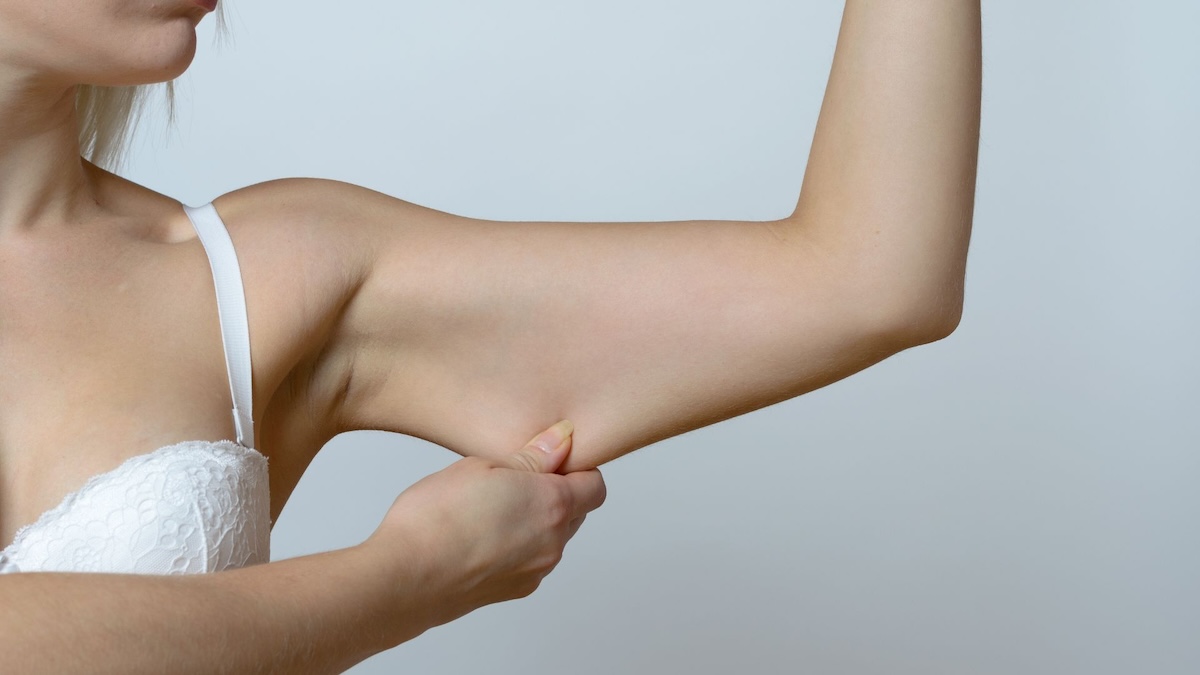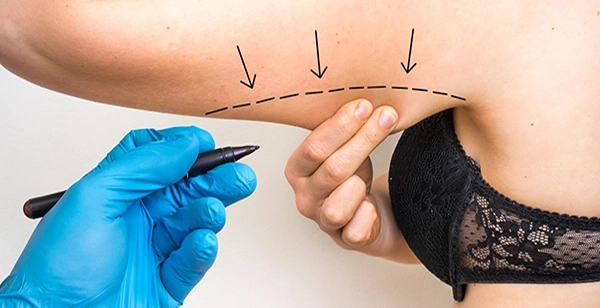
Successful arm lift recovery involves several essential steps and considerations to ensure optimal healing. First and foremost, adhering to post-procedure care instructions from your surgeon is crucial. This may include wound care management, avoiding certain activities, and taking prescribed pain medication to manage discomfort effectively.
Adequate rest is vital during the initial recovery phase. Your body needs time to heal, so prioritize sleep and limit physical exertion. Maintaining proper nutrition and hydration can significantly support the healing process; a balanced diet rich in vitamins and minerals promotes tissue repair.
Designating a caregiver is also an important aspect of recovery. They can assist with daily tasks, ensuring your safety and comfort as you regain strength. Moreover, attending all follow-up appointments allows your surgeon to monitor your healing progress and address any concerns that may arise.
By focusing on these key areas—post-procedure care, rest, nutrition, caregiver support, and follow-up appointments—you can set the stage for a smooth and successful arm lift recovery.

Arm lift surgery, also known as brachioplasty, is increasingly sought after by individuals looking to achieve firmer and more toned upper arms. While the procedure can significantly enhance one’s appearance, it also comes with a recovery period that raises a variety of questions and concerns. Understanding the most common queries regarding arm lift recovery can help patients prepare mentally and physically for the healing process.
From post-operative care to expected timelines for swelling and return to daily activities, addressing these concerns is crucial for a smooth recovery. In this guide, we will explore the most frequently asked questions surrounding arm lift recovery, providing insights and clarity to ensure a more comfortable and informed experience for patients.
Immediately following brachioplasty, post-operative care is crucial for a smooth recovery. Patients are required to wear a compression garment to manage swelling and support the healing tissues; this is essential for optimal results. Due to the effects of anesthesia, patients should arrange transportation home, as driving is not safe. A caregiver’s assistance is vital during this period, helping with daily activities and monitoring for any complications.
Dietary recommendations post-surgery focus on hydration, as fluids are necessary for recovery. Incorporating soluble fiber can aid in digestion and prevent constipation, which is common after surgery. Additionally, consuming bioavailable protein supports tissue repair and healing. Foods rich in protein, such as lean meats, legumes, and dairy, should be included in the diet.
In summary, proper post-operative care, including wearing a compression garment, arranging safe transportation home, ensuring caregiver assistance, and following dietary recommendations, is essential for a successful recovery after Brachioplasty.
The recovery period following an arm lift can bring varying levels of pain, ranging from mild to severe, depending on the individual and the extent of the surgery. Patients can expect significant soreness in the upper arms, which may intensify during movement or if the arms are elevated. Swelling and bruising are common, often peaking in the first week and gradually subsiding thereafter.
Adhering to post-operative care instructions is crucial for a smooth recovery. This includes keeping the surgical area clean and properly dressed, as well as following guidelines on activity restrictions. Pain medication will be prescribed to help manage discomfort, and patients should be proactive about taking it as needed.
Monitoring the surgery site is also vital; any sudden changes such as increased redness, swelling, or discharge should be reported to a healthcare provider immediately. Being aware of these potential complications can lead to a more successful recovery, allowing patients to enjoy the benefits of their arm lift.

Following an arm lift, it’s important to understand that the procedure involves incisions which will result in noticeable scars. Typically, these incisions extend from the armpit down to the elbow. While the initial appearance of these scars may be bright pink, they generally fade over time.
To minimize their visibility, effective scar care techniques, including scar massage, can be beneficial. These methods can promote healing and help flatten the scars, making them less prominent.
It’s also worth noting that the incision is strategically placed to help conceal the scar within the inner arm and under the armpit, enhancing aesthetic results. While some scarring is inevitable after an arm lift, understanding the healing process and employing appropriate scar care techniques can contribute to a more satisfactory outcome. Proper attention to the incision sites can lead to significant improvements in scar appearance over time.
After an arm lift or Brachioplasty, most patients find they can return to work as soon as one-week post-surgery. However, for optimal healing and recovery time, it is advisable to allow 10 to 14 days before resuming regular activities. During this initial recovery phase, following post-operative instructions is crucial, as it aids in the healing process and helps prevent complications.
Patients may experience gradual improvement in arm strength over this period. It’s essential to listen to your body and avoid strenuous activities until cleared by your surgeon. While returning to work in two weeks is usually achievable, some minor discomfort may still be present, which is normal as the body heals.
In summary, plan for a return to work around two weeks after your arm lift to ensure a more comfortable and efficient recovery. Following the post-operative care instructions will support your overall progress and help you regain your strength safely.
After an arm lift, it’s crucial to follow a structured exercise plan to ensure proper healing. Patients can begin with slow-paced walks soon after surgery to promote circulation. At around two weeks, it’s safe to gradually increase activity intensity, but high-intensity workouts must wait.
To avoid straining the arms, refrain from high-intensity activities for at least four to six weeks post-procedure. Minimal exertion workouts, such as gentle stretching and light core exercises, can start three weeks after surgery. This allows the body to begin regaining strength without compromising recovery.
It is essential to avoid heavy lifting and contact sports for six weeks to prevent complications or setbacks in healing. Always listen to your body, and consult your surgeon for personalized guidelines. Following these recommendations will help ensure a smoother recovery while safely resuming your exercise regimen after an arm lift.
Undergoing an arm lift, or brachioplasty, is a transformative procedure designed to enhance the appearance of the upper arms by removing excess skin and fat. While the results can be life-changing, it’s crucial to understand the recovery process and timeline to ensure a smooth healing experience. Recovery from an arm lift can vary from person to person, influenced by factors such as overall health, the extent of the procedure, and adherence to post-operative care instructions. This guide outlines the typical recovery timeline, highlighting key milestones and considerations at each stage. By preparing for the recovery journey ahead, patients can set realistic expectations, manage any discomfort, and ultimately enjoy the best possible outcomes from their surgery.
Right after waking up from the procedure, patients can expect to be in the recovery room, where staff will monitor their vital signs. During this time, a compression garment may be applied to help control swelling and support the healing process. Patients might notice drainage tubes placed to prevent fluid buildup; these are normal and will be addressed by the medical team.
Initial symptoms can include bruising and swelling, which are typical after surgery. Effective pain management is crucial, so patients should communicate any discomfort to ensure appropriate pain medication is administered.
Staying hydrated is essential for recovery, so patients should drink water as instructed. Additionally, having assistance during this period is important, as mobility may be limited.
Patients are encouraged to take short walks to promote circulation and prevent blood clots, but they should balance this with ample rest and relaxation. It’s important to listen to their body and not overexert themselves during the recovery phase.

During the first week following your arm lift surgery, it’s crucial to prioritize your recovery. Expect experiences such as swelling and bruising, which are common but manageable. Elevate your arms and rest as much as possible to help reduce these symptoms.
Pain management is vital in this phase; adhere to the prescribed medication schedule to stay comfortable and support healing. Having assistance from a family member or friend is highly recommended. Daily activities like dressing, bathing, and reaching for items can be challenging, so don’t hesitate to ask for help.
Additionally, be mindful of your follow-up appointments. These are essential for monitoring your recovery and addressing any concerns. This initial week is all about laying the foundation for a smooth recovery, so focus on rest, managing swelling, and following your care instructions closely. Your body will thank you as you progress through your healing journey.
During the mid-recovery phase, typically occurring from Weeks 2 to 3 post-surgery, patients can expect a notable reduction in bruising and discomfort. While these symptoms should have significantly diminished, some arm swelling may still persist, though it usually is less severe than experienced in the initial recovery phase.
At this stage, Dr. Moein may provide activity clearance for certain light activities. Patients may be allowed to resume driving, engage in light exercise, and undertake sedentary job duties, which can help ease the transition back to normal daily life.
However, it is crucial to maintain ongoing follow-up appointments during this period. These appointments are essential for monitoring recovery progress and identifying any potential complications early. Staying in close contact with Dr. Moein ensures that your healing process remains on track and any concerns are promptly addressed. Remember, prioritizing follow-up care is vital for a successful recovery.
During Weeks 4 to 12 of the recovery phase post-arm lift surgery, patients can expect significant progress in their healing journey. If no complications arise, you may be cleared for light jogging and increased physical activity, which will aid in your overall recovery and well-being.
During this period, a gradual reduction of arm swelling will occur, although it is essential to note that complete resolution may take up to a year. You may also experience occasional shooting pains as nerves continue the healing process, which is a normal part of recovery.
It’s crucial to emphasize the importance of attending all follow-up appointments with Dr. Moein. These visits are vital to monitor for any potential complications and ensure that your recovery is progressing as expected. Engaging with your healthcare team and following their recommendations will support your healing journey and help you achieve optimal results. Remember, patience is key during this phase!
After an arm lift procedure, patients typically notice significant, long-term changes as their underlying tissues relax and adjust to the new contours. The initial scars from the surgery will continue to fade over the 12 to 18 months following the procedure, a process known as scar maturation. Most patients find that by six weeks post-surgery, they can fully enjoy their results, having resumed regular activities and implemented scar treatment regimens.
It’s vital to remember that recovery experiences can vary significantly among individuals. Personalized care is essential, and maintaining open communication with your surgeon throughout this process can ensure the best outcomes. Your consultation will help address any concerns that may arise during your long-term recovery and allow you to optimize your results. Embrace the transformation your arm lift has provided, knowing that as time progresses, both improvements in your arm’s appearance and the fading of scars are part of the journey.
Successful arm lift recovery hinges on diligent post-procedure care. Adhering to your surgeon’s post-operative instructions is crucial for optimal results. Attend all follow-up appointments to monitor your healing progress and address any concerns.
Pain management is vital; take prescribed medication as directed to control discomfort and facilitate recovery.
When it comes to sleeping position, opt for sleeping on your back with pillows elevating your arms. This helps reduce swelling and provides comfort during the healing process. A caregiver’s support can be invaluable, assisting with daily activities and ensuring you follow care guidelines, thus easing your recovery.
Additionally, consider dietary adjustments that promote healing; focus on hydrating foods and those rich in vitamins and proteins to support tissue repair.
By prioritizing these recovery tips—post-procedure care, follow-up appointments, effective pain management, proper sleeping position, and a supportive environment—you can enhance your arm lift recovery and achieve your desired aesthetic.

In conclusion, recovering from an arm lift requires careful attention to post-operative care to ensure optimal healing. Key recovery tips include strictly following your surgeon’s post-operative instructions, especially regarding incision care to prevent infection.
In the initial days after surgery, expect swelling, which is normal but can be minimized by keeping your arms elevated while sleeping. Using pillows can aid in maintaining this elevated position. It’s also essential to initiate light walking as soon as possible, as this helps reduce the risk of blood clots, promoting circulation and healing.
Plan for a caregiver to assist you during the first few days, as daily activities may be challenging. Swelling will gradually subside, typically within two to four weeks, but complete recovery can take several weeks to a few months, depending on individual healing processes.
Remember, following these recovery tips not only supports your healing journey but also enhances the final results of your arm lift. Prioritize your health by adhering to all post-operative care instructions.
Since there is a multitude of considerations, and this is likely your first arm lift, trust the professionals at Moein Surgical Arts for your procedure. Dr. Moein has years of experience helping clients get results they love and also has information on how to make the results last for years and years to come. To speak with the team or schedule your initial consultation for your arm lift!